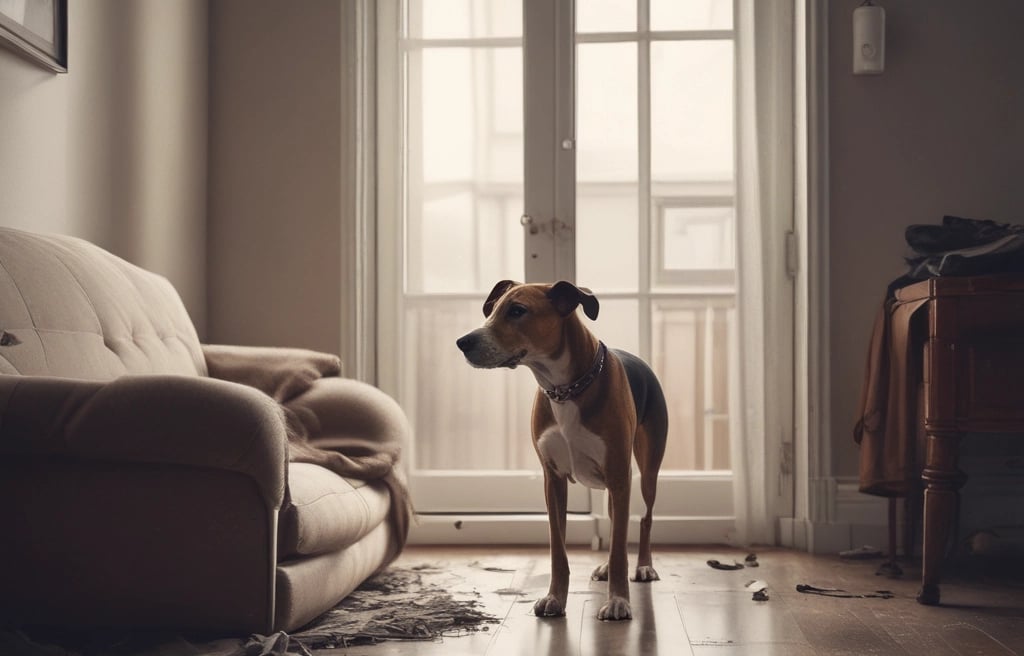Understanding Separation Anxiety in Dogs: Why Specialized Treatment Matters
Avoiding common mistakes and finding your way to long term success with separation related behavior problems with your dog.
Erin Elizabeth
12/8/20242 min read


Introduction to Separation Anxiety in Dogs
Separation anxiety in dogs is a common issue that can lead to stress and destructive behavior when they are left alone. Recognizing the signs of this condition is crucial for any dog owner, as it can greatly affect both the dog's well-being and the owner's peace of mind. While many may opt for traditional methods to mitigate this anxiety, understanding why these approaches often fall short is essential for effective resolution.
Challenges with Traditional Training Methods
Many dog owners mistakenly believe that obedience, confidence building, and forced exposure also known as "flooding" can fix separation anxiety. Others believe allowing dogs to "cry it out" will teach them to eventually learn to self soothe much like the concept applied to human babies. However, these traditional methods, such as simply leaving the dog alone for progressively longer periods, can exacerbate the problem, and while our human brains do in fact work very much like dogs do, we are still a different species. Therefore certain approaches cannot be communicated effectively and are largely ineffective. These linear and often frightening approaches and experiences can lead to the emergence of additional behavior struggles or a worsening of the current problems in response. Dogs suffering from separation anxiety experience intense panic when left alone, forcing them to endure longer separations without proper technique can lead to increased distress and other behavioral problems. Moreover, common misconceptions surrounding separation anxiety can perpetuate myths that hinder a dog’s recovery process.
The Importance of Specialized Treatment
Specialized treatment for separation anxiety includes tailored training methodologies that address the root causes of the disorder. Professional help, such as consultation with a veterinary behaviorist or a certified dog trainer, often yields better results. These experts can provide an individualized approach, which may include behavior modification techniques, enrichment strategies, and desensitization approaches designed specifically for anxious dogs.
Furthermore, specialized treatment helps mitigate the associated risks of misinformation, which not only lead to ineffective methods that can create additional behavior issues but can also be very confusing and frustrating for their humans. For example, punishment-based training techniques can worsen anxiety rather than alleviate it, leading to longer training periods and a higher likelihood of a dog developing new behaviors unrelated to the original issue. Particularly when punishments are applied to mistakes that occur while the dog is experiencing separation anxiety or upon the return of their person, thus compounding any existing anxiety by creating a negative association with arrivals and departures
Getting Started on the Right Track
If you are facing the challenge of a dog with separation anxiety, it is crucial to begin by assessing the situation thoughtfully. Collect observational data and note specific behaviors exhibited when your dog is left alone. The best way to get started is to get a security camera to monitor your dog when you cannot observe them in person. These records can provide invaluable insight when consulting a professional.
By prioritizing specialized treatment over traditional methods, dog owners can pave the way for more effective and humane strategies to combat separation anxiety. Professional guidance may be the essential piece missing from your efforts. Recognizing the uniqueness of each dog's anxiety will help you embark on a successful journey toward creating a calm and balanced environment for both you and your pet. Please fill out our form on the contact page for a free phone consultation with one of our specialists.
